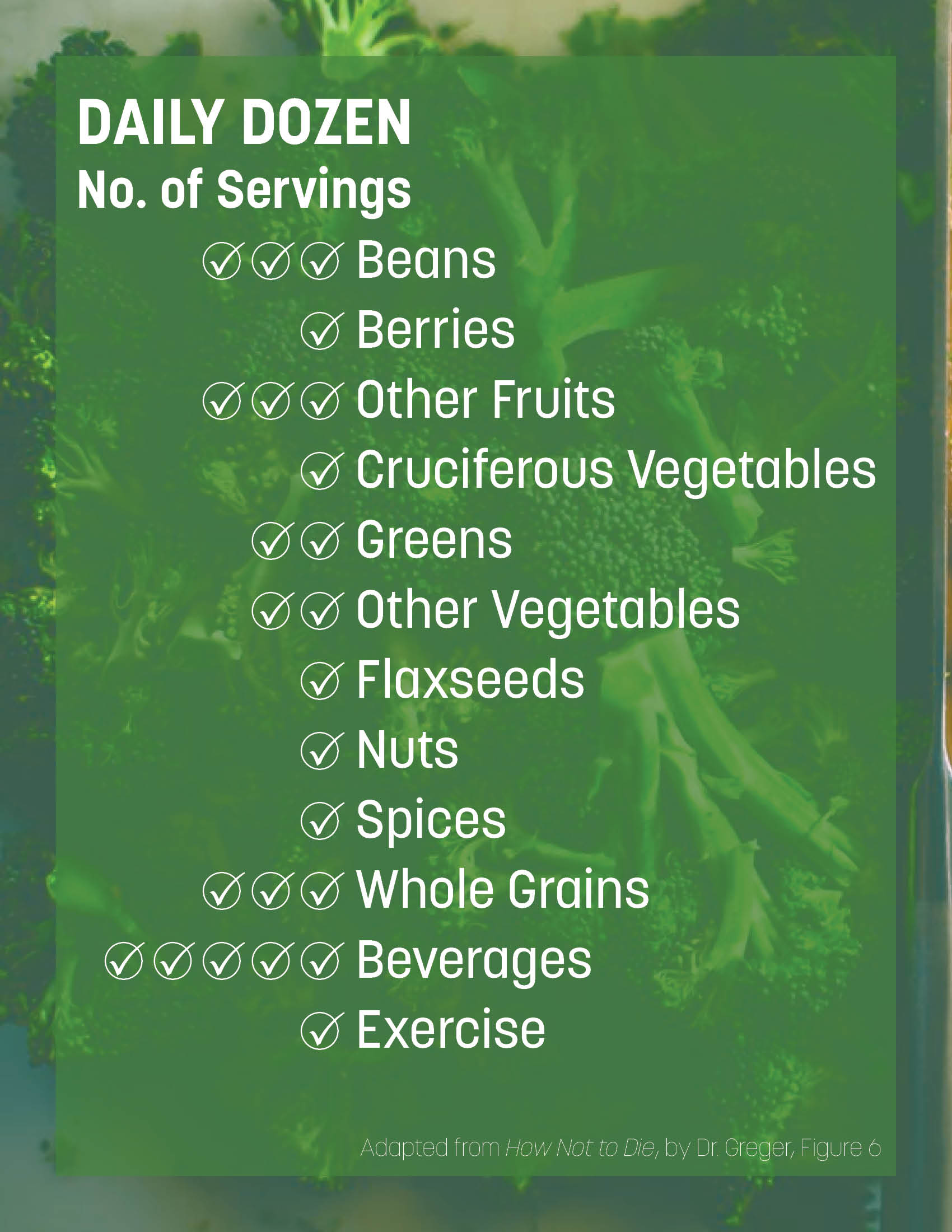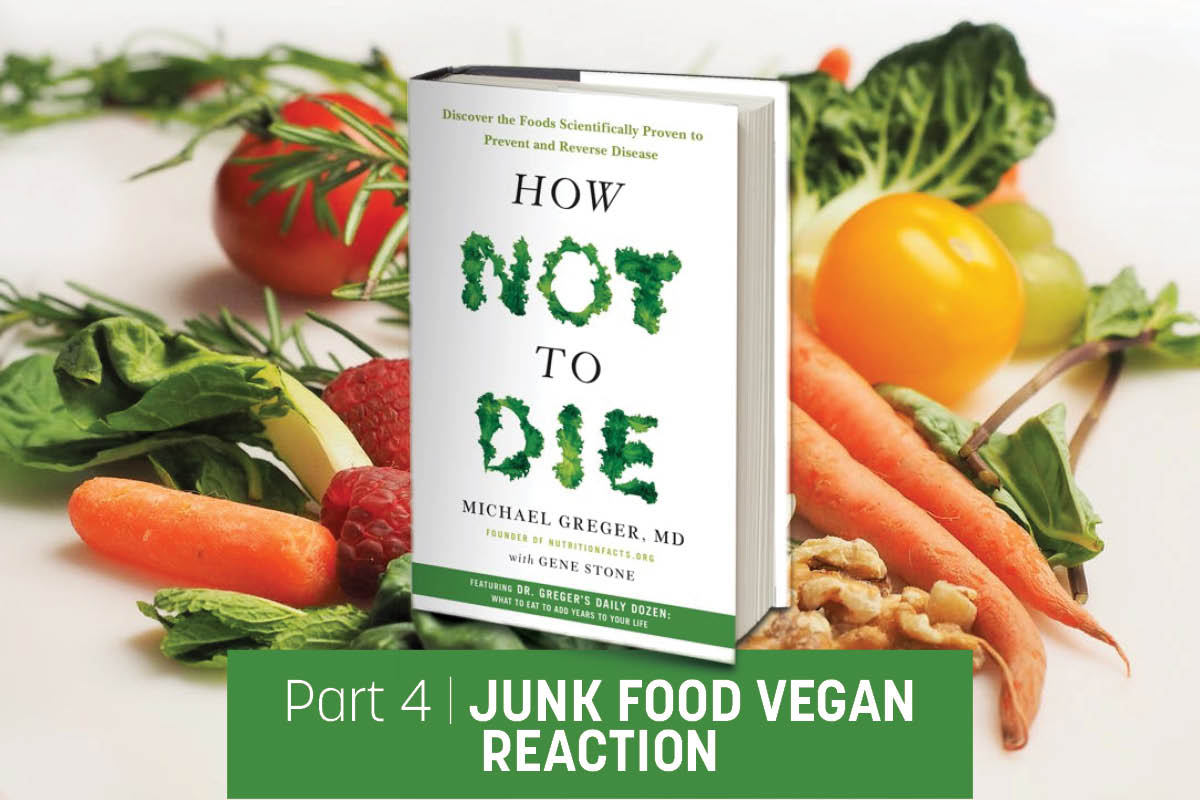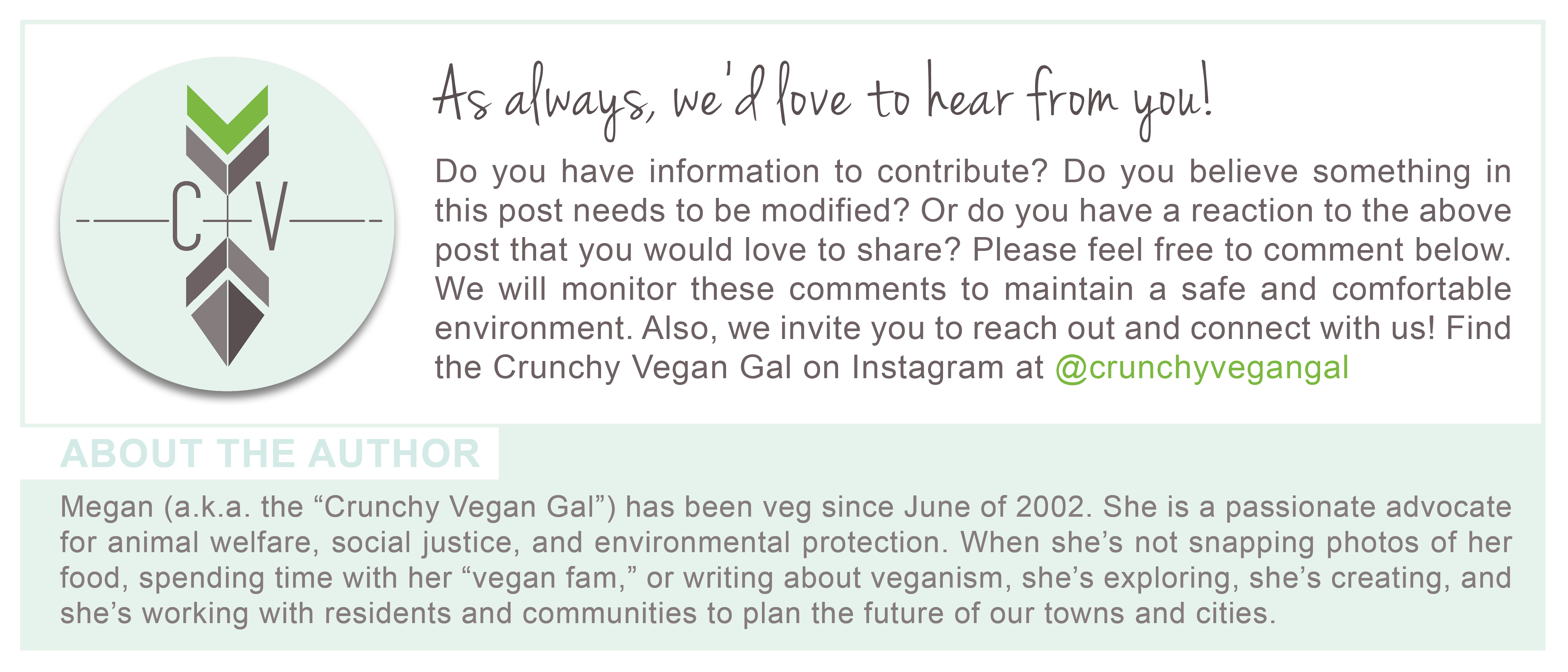This is Part 4 of a 5 part series summarizing the key points of the book How Not to Die and sharing my reactions as a proud junk food vegan and, thus, a suspicious reader from the start. Begin with Part 1 | Introduction >> Part 2 | Message >> Part 3 | Common Themes >> Part 4 | The Junk Food Perspective >> Part 5 | Final Takeaways
Though I was hesitant to hear How Not to Die’s message, and had even shamefully put up a few mental barriers, I am walking away feeling empowered to improve my life through healthier food choices. I love junk food, don’t get me wrong; but I am now craving a healthier, more whole-food based diet. How did I come to be so interested in making changes? It was gradual, thanks to one convincing point after another. And I came to see the full extent of impact my junk food tendencies might have on my body.
Why Moderation Just Won’t Do
Early on, Dr. Greger makes a playful little comment about employing moderation. (Anything in moderation can’t be that bad, right?) Well, think about it this way:
For the case of an individual who hits their shin with a hammer each day, a doctor might prescribe pain killers. That’s the approach of our current medical system. If you want to control the problem, “you can choose moderation and hit yourself with a smaller hammer,” Dr. Greger explains, “but why beat yourself up at all?”
While I heard this little metaphor loud and clear, I wouldn’t allow it permeate fully at first. Originally, I took this point to be more specifically directed towards the “meatless Monday” crowd (given that the book encourages a plant-based diet—to which I already adhere). Yet, any processed food is unhealthy—meat or otherwise. As I read further in the book, the knock on moderation felt more and more applicable for the “junk food vegan” folks like myself and my greasy, cheezy, salty, sugary eating habits.
To an extent, moderation of sweets and treats and can be managed healthfully. But we need to be a lot more conscious about the food choices we make.
Neither Healthy, Nor Unhealthy
Not that he advises it, but Dr. Greger mentions on a few occasions how eating one “healthy” meal (e.g., an anti-oxidant packed smoothie), followed by a week’s work of junk food (e.g., nothing but donuts) would provide more nutrients than most people get while eating the SAD meal plan. (Remember from Part III, the Standard American Diet is S.A.D.)
However, with some exceptions, Dr. Greger cautioned against calling certain foods “healthy” and others “unhealthy.” Foods aren’t really good or bad so much as better or worse.
Is it healthy? Well, Dr. Greger would ask, “compared to what?” Is coconut oil good for you? Compared to butter, sure. But it’s not always healthier. Furthermore, too much of anything can actually have negative effects.
For this better-or-worse spectrum, I valued Dr. Greger’s traffic light list which sorted everything into red, yellow, and green light foods (adapted below). Most simply, avoid ultra-processed plant foods and processed animal foods; limit consumption of processed plant foods and unprocessed animal foods; and have at it with unprocessed plant foods.

Dr. Greger’s Little Secret
I appreciated hearing Dr. Greger confess that he eats some yellow or red light foods (which are worse and worst compared to green light foods), as a means to help himself eat more green light foods (e.g., drizzling hot sauce on greens). It almost felt as if I was listening in on a shameful secret, and rejoicing, “Dr. Greger isn’t perfect!”
But honestly, I find that it made him more credible, in that he no longer appeared as someone living an unattainable, health-obsessed lifestyle. It made him more relate-able as an actual human being and not a health robot.
“We cannot let the perfect be the enemy of the good.”
Dr. Michael Greger, in How Not to Die
If you need the yellow or red light foods to eat the healthier foods, go for it. And Dr. Greger acknowledges that there are of course special occasion foods. But every food choice should be seen as an opportunity.
The Opportunity Costs of Food
Eating any food has an associated opportunity cost. Every time you put something in your mouth, it’s a lost opportunity to put something better in there. And consuming junky foods with too few vegetables could be killing us.
The Global Burden of Disease study identified the typical American diet as the primary cause of death and disability, with inadequate vegetable intake as our 5th leading dietary risk factor—nearly as bad as our consumption of processed meat. By consuming too few vegetables, we’re almost putting ourselves at as much risk as we would if we consumed meat. And if that isn’t concerning enough, think about the impact on quality of life.
Foods have baggage—and that can be either a positive, or negative side-effect. For example, with the calcium you get from leafy green vegetables, you also get fiber, folate, iron, and antioxidants, versus the saturated fat you get alongside calcium you get from drinking milk. So it’s not so much the quantity of foods we enjoy, but the quality and also variety of the fruits and vegetables we consume.
But Pizza
It’s easy to say that pizza and ice cream make your life better. Yet, when we regularly eat high sugar/fat foods (e.g., ice cream—even if it’s vegan), our bodies become desensitized to the pleasure derived from consuming those foods. We build a tolerance for pleasurable sensations as our brain moderates our dopamine sensitivity…which makes everything we do less enjoyable! It’s not just our taste buds that change, but our brain chemistry changes!
By limiting our intake of fatty and sugary foods to special occasions, we can return our dopamine sensitivity to normal levels. I don’t know about you, but when I eat pizza, I want to thoroughly enjoy that pizza! And when I go hiking, or spend time with friends, I don’t want to be ever-disappointed because ice cream ruined my ability to feel pleasure! Instead, I’ll strive for a balance of healthful foods, using Dr. Greger’s Daily Dozen checklist as a tool to help orchestrate my meals.

| A Side Note on Enjoying Life
The book featured a chapter entitled, “How Not to Die from Suicidal Depression.” This one caught me off-guard, but had me hanging on every word. In short, greater fruit and vegetable intake is associated with lower odds of depression and better moods. So not only can we keep our pleasure center receptive to enjoyable experiences, but we can boost our moods overall, just by consuming more plants! |
Overall
I already considered my diet pretty balanced, despite also being a junk food vegan. For every vegan donut I eat, I also eat hefty amounts of fruits and vegetables (of course, some weeks I’m better about that than others). That being said, I still can acknowledge that I have the control to make my life longer-lasting and more enjoyable, simply by cutting back on sweets and other junk food.
With all the recipe samples and food talk, the book had me craving foods like beans, nuts, smoothies, veggies with hummus, etc. And that’s what I want! When I crave food, I don’t want to be craving foods that kill me faster, I want to crave foods that prolong my life!
Check back tomorrow for a recap of the book and some final takeaways. For more resources, head to NutritionFacts.org. Be sure to watch the PBS special on Tuesday, August 8 at 8pm ET.
This 5-part series includes:





Trackbacks/Pingbacks